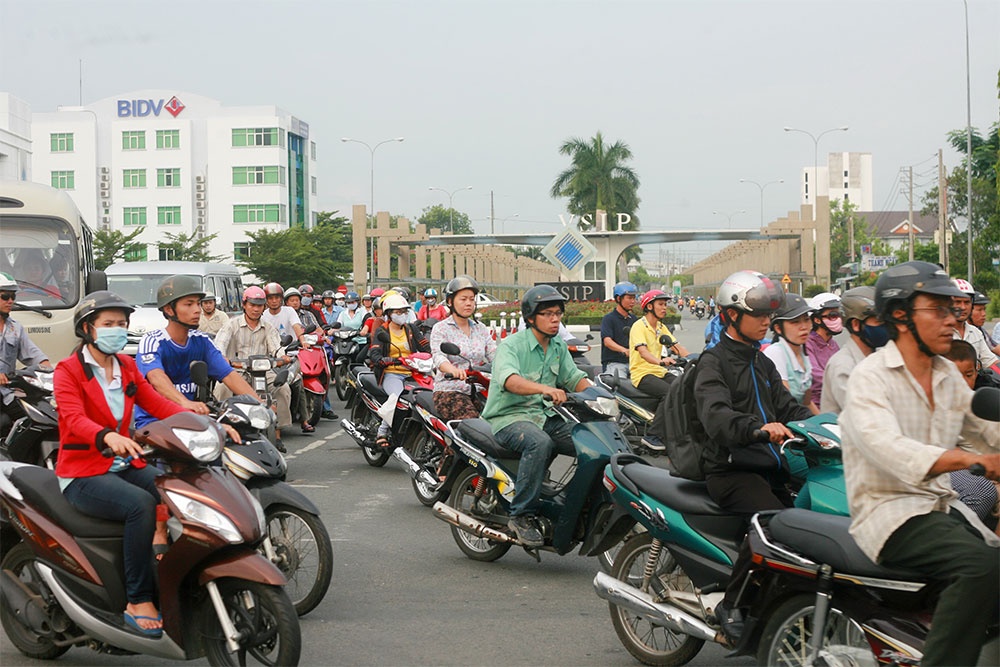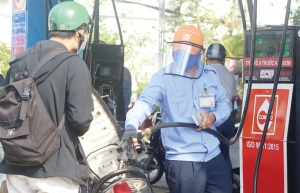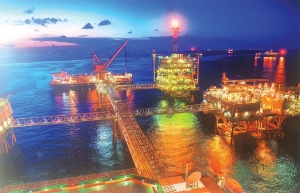Funds required for Vietnam’s petroleum reserves
Two weeks ago, the Ministry of Industry and Trade (MoIT) sent a document to the prime minister on opportunities of a petrochemical complex and national crude oil reserve at Long Son Petroleum Industrial Park in the southern province of Ba Ria-Vung Tau, with the state-run oil and gas group PetroVietnam as an investor.
 |
| Funds required for Vietnam’s petroleum reserves, illustration photo/ Le Toan |
The project has a scale of over $18 billion, with a total capacity of 12-13 million tonnes annually, and is expected to operate commercially from 2028.
The Ministry of Planning and Investment considers the addition of such a complex and reserve appropriate for the country’s energy development strategy, but it also raised concerns about the construction site itself.
Meanwhile, the Ministry of Transport stated that some proposed points remain unclear, and that it would be necessary to clarify the location of the port in the venture, as well as supplement the detailed planning of land, port waters, and requirements for the project and wharf planning.
The Ministry of Natural Resources and Environment also requested to clarify the current status of land use, particularly related to the regulations on water resources and pollution regarding climate change scenarios.
The Committee for Management of State Capital at Enterprises requested that PetroVietnam reports on its ability to balance investment capital to ensure resources for implementation of key state oil projects, as well as capital mobilisation plans.
The facility in Ba Ria-Vung Tau is proposed by PetroVietnam based on Vietnam’s demand for around 19.5 million tonnes of petrol per year by 2030 – a figure which is to increase to 49 million tonnes by 2045. PetroVietnam expects the government’s approval for its funding policy next month.
PetroVietnam chairman Nguyen Quoc Thap said the problem lies in the approach, citing financial problems for the project. “With PetroVietnam’s current assets, the government only needs to accept the mechanism of mortgaging the property or mortgaging the project itself, and international organisations will provide loans,” Thap said.
According to Thap, the construction of underground warehouses to store crude oil and petroleum products is “very necessary” to ensure energy security and respond to market fluctuations when oil prices fall deeply or increase.
“However, the capacity of each warehouse of one million tonnes of crude oil and 500,000 tonnes of petroleum products as proposed by PVN is modest. In fact, the level of 500,000 tonnes of petroleum reserves can only meet the demand for 10 days.”
The government planned to stockpile about 700,000 tonnes of crude oil in 2020 and raise it to 2.2 million (equivalent to 3.1 million cubic metres of storage) by 2025, according to a 2009 decision.
Data from the MoIT’s state management report shows that Vietnam’s national petroleum reserves are still low compared to many countries worldwide. On average over the past five years, Vietnam’s reserves were only 370,000 cu.m per year, equivalent to nine days of net imports and 6.5 days of consumption.
Currently, Vietnam has oil reserves of about 4.4 billion barrels, and a production output of about 340,000 barrels per day, according to PetroVietnam data.
According to the MoIT, national crude oil storage sites are based in Dung Quat, Quang Ngai, Nghi Son, Thanh Hoa, and a few other locations. By the end of 2021, the capacity of all petrol and oil depots was 6.4 million cu.m, with all of them also being commercial warehouses managed by enterprises. Meanwhile, the capacity leased by the state to preserve national oil reserves accounts for only 5-10 per cent.
Increasing national petroleum reserves is a matter of greater concern to many countries amid the energy price crisis. Thailand in March announced an increase in oil reserves from 60 to 70 days to ensure domestic demand. Meanwhile, Japan’s oil reserves as of the end of January were at about 470 million barrels, equivalent to a domestic demand of 236 days.
Nguyen Thuy Hien, deputy director of the MoIT’s Planning Department, said, “Raising Vietnam’s national petroleum reserves will be carried out following the roadmap until 2025.”
In 2022, the total petrol demand for the domestic market was nearly 21 million cu.m, but the domestic supply only contributed about 14.4 million cu.m, with the rest being imported, according to the MoIT which said that the country is maintaining a structure of petroleum reserves from three sources: commercial reserves at major petroleum trading enterprises, distribution traders, and production reserves from refineries and national reserves.
“The first source for use are the commercial reserves of enterprises, followed by production reserves at oil refineries, and finally, the national reserves. National petroleum reserves are still kept at 24 warehouses of major petroleum trading enterprises,” Hien said.
 | Growth ahead for oil and gas businesses Oil and gas companies could cash in on the current oil prices that are forecast to remain high in 2023, which is also an important factor promoting increased investment in the sector. |
 | Capital roadblocks hindering nation’s oil and gas prospects As the Vietnamese market continues to wait for large oil and gas projects to launch, the focus lies on small-scale ventures and innovative investment attraction schemes to profit from the world’s high oil prices. |
What the stars mean:
★ Poor ★ ★ Promising ★★★ Good ★★★★ Very good ★★★★★ Exceptional
Related Contents
Latest News
More News
- Heavy industries set for pilot greenhouse gas quotas (December 25, 2025 | 10:00)
- Swedfund invests in MSME growth and climate action in Vietnam (December 19, 2025 | 11:42)
- GreenYellow brings solar energy to light up remote schools in Tuyen Quang province (December 19, 2025 | 08:00)
- Charge+, Grab partner to develop EV charging network in Vietnam (December 18, 2025 | 17:11)
- Linking sci-tech and innovation to Vietnam’s net-zero future (December 18, 2025 | 14:31)
- Driving double-digit growth through green and circular transformation in Vietnam (December 17, 2025 | 09:00)
- Standard Chartered and ACCA deepen collaboration to develop Vietnam’s talent for a sustainable future (December 15, 2025 | 18:18)
- Schaeffler reports strong early output from Dong Nai solar project (December 12, 2025 | 15:16)
- Forestry conference highlights biodiversity and sustainability goals (December 09, 2025 | 13:35)
- Home Credit honoured among top 10 sustainable companies in trade and services (December 09, 2025 | 12:18)

 Tag:
Tag:





















 Mobile Version
Mobile Version